The Ancient Toltecs ruled Mesoamerica from 900 to 1150 A.D. The empire that once ruled central Mexico, can be described as a great nation of warriors, sculptors, and painters.
These people built a legacy so great that it inspired later generations until suddenly, they were no more. This is a mystery that has remained unresolved and has puzzled many archaeologists ever since.
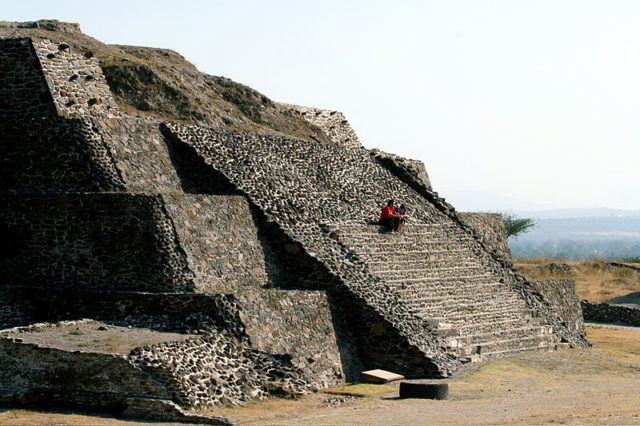
All that remains of the great Toltec people is what is contained in the scriptures of their alleged descendants, the Aztecs. The impact of this civilization was such that other great empires wanted to be like them to the point that they even claimed to be their descendants.
The Toltecs, who built monumental statues, detailed stone carvings, and were known as a warrior nation, are now one of the greatest lost civilizations. Here are some of the facts that are known about them:
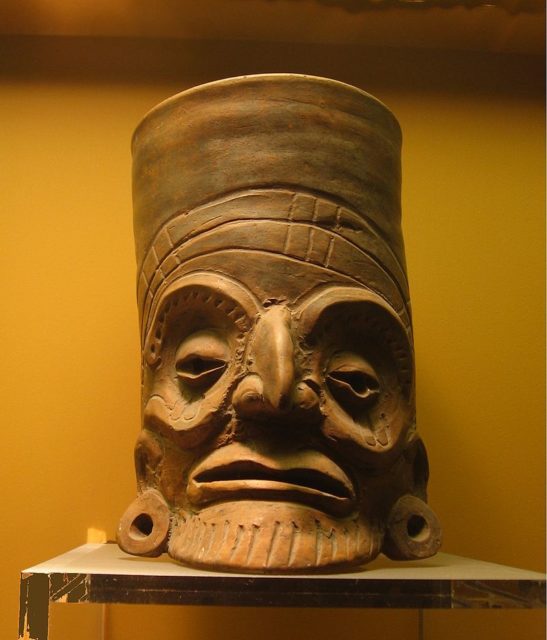
They considered their religion to be their compass; it was known as the cult of Quetzalcoatl, in honor of their most revered deity who founded their capital Tula. They spared no expense in spreading his worship and they did this with religious vigor throughout their kingdom. Quetzalcoatl, who’s depicted as a feathered serpent, was the most revered of all their gods and was the inspiration for their existence.
Their warriors wore strong armor, such as chest-plates and a small arm shield. Their head-dresses were feathered to resemble Quetzalcoatl. He was not, however, the only inspiration for their warrior uniform – animals like the jaguar inspired their dress as well as other gods like Tezcatlipoca. Fierce warriors required the best weapons, and they had a sword called Atlatls which was able to fling darts at high velocity. They also had a curved weapon that was a mix between an axe and a club.
Tula was burnt to the ground and looted of its history:
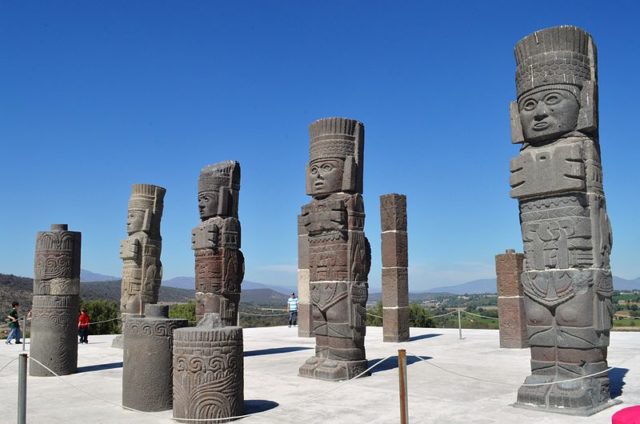
What exactly caused the Toltec’s destruction is still anyone’s guess. What is known, is that the capital city was burnt to the ground. Whether there were survivors is unknown, but the ruins of the city have seen many tragedies over time, including lootings. Even their alleged descendants, the Aztecs, who revered them, sent many parties to remove their statues, their stone carvings, and other relics from the ruined city.
After the demise of the Aztecs, many other looters picked the ruined capital of Tula clean, leaving little behind for modern day researchers to study. Despite this, there have been some significant finds, like the Atlante statue, considered significant because of its war engravings that show the emperors of the time dressed in wartime clothing.
The practice of human sacrifice was a big thing in Toltec culture:
The great ancient people of the region practiced the bloody ritual of human sacrifice to appease their gods and to ensure they avoided disaster. They believed it avoided natural disasters and kept their gods happy. From death comes life and the Toltecs practiced this with impunity.
Ce Atl Quetzalcoatl, the god-king, abandoned his people due to a disagreement about the bloody ritual. He was not a fan of the bloodlust in the sacrifice of so many people to appease the god Tezcatlipoca, yet his view was rejected even though some now consider him to be Quetzalcoatl, the ruler-turned-deity who founded the capital of Tula. Having an opinion on the ritual which was unpopular, he left and was said to have settled in Chichen Itza.

Archaeological evidence regarding the practice is based on the discovery of the reclining men statues. These statues of a man on a rectangular base are called Chac Mool. The statues, which typically have the man with his head turned at 90 degrees, and a bowl on his belly, have been found at other ritual sites. The rack of skulls at the ceremonial plaza called tzompantli contains the skulls of sacrificed victims from the ceremonies.
There is a nexus between the Toltecs and the Maya of Chichen Itza:
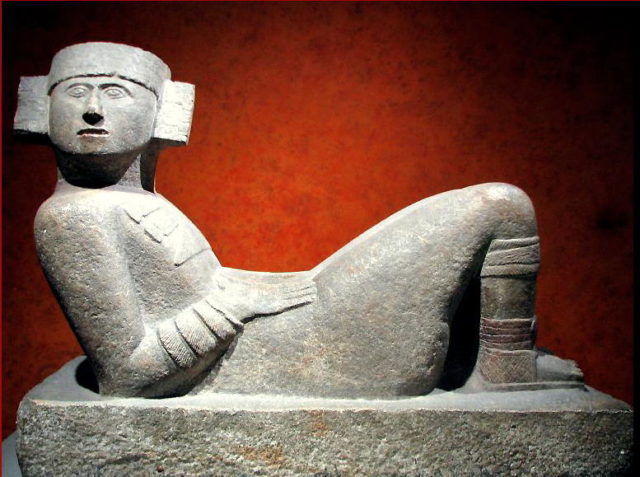
Considering the distance between Tula and Chichen Itza, they share striking similarities. Tula, which is 50 miles (80 km’s) north in Central Mexico, and Chichen Itza, which is in the Yucatan, have common features, raising certain theories. The first, which looks to be dispelled due to contradictory evidence, is that the Toltecs conquered Chichen Itza. This seems not to be the case, as said evidence points to the migration of expelled nobles from the Toltecs, settling in the area of Chichen Itza. Both areas have the same religious beliefs in the deity Quetzalcoatl. This has been explained by the idea that the expelled nobles brought their beliefs to the area. In Chichen Itza, Quetzalcoatl (Kulkulcan) was one of the great deities as well. Religion is not the only thing the areas shared; their architecture was also strikingly similar.
Both areas have the same religious beliefs in the deity Quetzalcoatl. This has been explained by the idea that the expelled nobles brought their beliefs to the area. In Chichen Itza, Quetzalcoatl (Kukulcan) was one of the great deities as well. Religion is not the only thing the areas shared; their architecture was also strikingly similar.
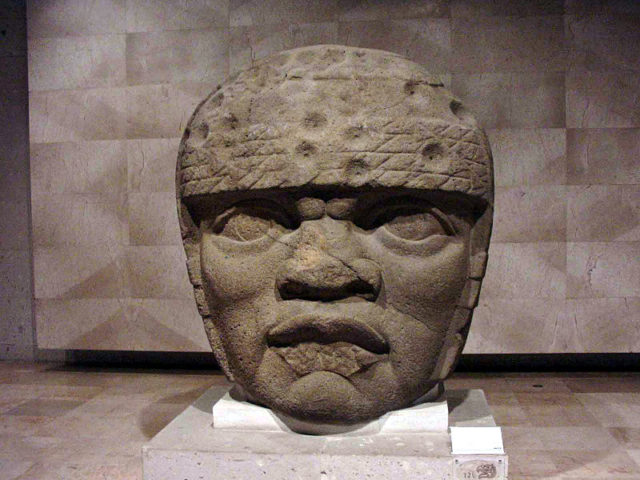
The Toltec’s had been trading goods:
Evidence shows that the Toltecs had conducted business with their neighbors – not to the degree of other well-known traders like the Maya but nonetheless they were able to trade items like pottery, seashells, and other items. Researchers believe that most of their income was from warrior expeditions, but evidence of seashells from the Atlantic and Pacific point to traded items as well. Most items may have been acquired as a tribute to the great nation. The items were made from pottery, textiles, and obsidian.
The Olmecs, who preceded the Toltecs, also worshiped Quetzalcoatl. There is a monument dedicated to him which predates the Toltecs. But the Toltec worship of him was far more devoted. They managed to spread the cult of Quetzalcoatl so widely that his worship reached areas as far as the Yucatan, to the Maya, who called him Kukulcan.
This was the reason the Aztecs included him in their worship – they revered the Toltecs, and that’s why he is considered the greatest of gods in the Mesoamerican pantheon of gods.
The Aztecs claim to be the descendants of the Toltecs:
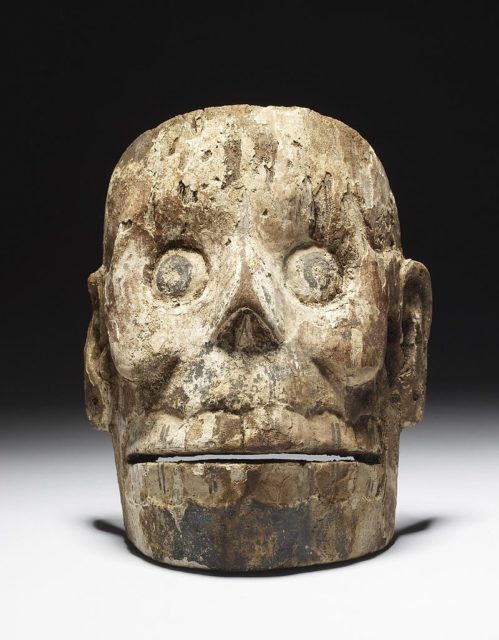
The Aztecs comprised one of the greatest civilizations in history. This they attribute to being the descendants of the Toltecs. Though the Aztecs established themselves long after the demise of the Toltecs, their rulers claimed to be the descendants from the noble bloodlines of the Toltecs. This was the reason for looting the ruined city of Tula. In dedication to the Toltecs, the Aztecs built structures at the burnt palace.
Their disappearance is still a mystery:
What caused the demise of the Toltecs is still a question that remains unresolved. Their decline happened during the late 1150 A.D. Not much is known besides the great fire that burnt the city to the ground. Historians believe that they were attacked as retribution by their neighbors. This is perhaps in part due to the actions of the Toltecs, who were known to be very violent and ruthless. Others believe that internal war may have been a factor. Still, it remains a mystery as to who and what caused their downfall.
There are still discoveries to be made at Tula:
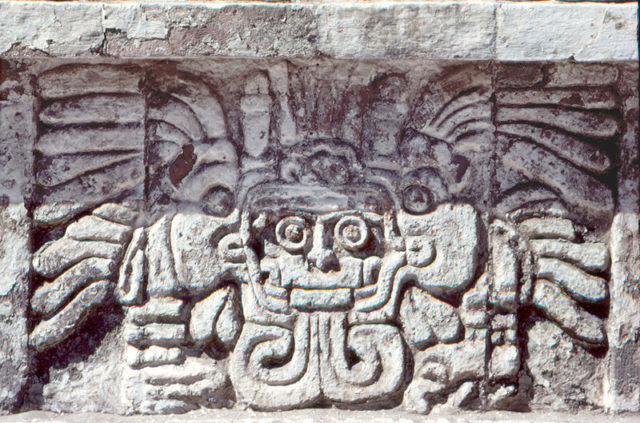
The city may have been destroyed and looted of its history, but hardworking researchers are still making discoveries that could unravel the Toltec history. In 1993, the “Cuirass of Tula”, a seashell chest-plate that was an offering, was discovered under a turquoise disc; it holds hope of more discoveries, like the 2005 excavation of Hall 3’s friezes.
This will make for further and better discoveries in the future, About Education reported.
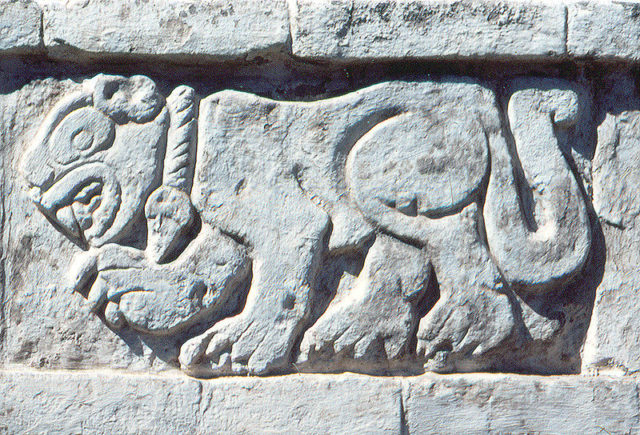
The Toltecs are not part of the modern day movement:
Miguel Ruiz is a modern day philosophical writer of the movement called the “Toltec spirit”. This movement is about guiding oneself, as addressed in his book, The Four Agreements. Other than using the name “Toltec”, it has nothing to do with the ancient civilization of Mesoamerica.
Read another story from us:Mitla: One of the most important archaeological sites in the state of Oaxaca in Mexico
The Toltec’s, at the height of their civilization, were the most revered nation of Mesoamerica. They were a great nation whose history fell into obscurity, and over time has been lost. But the impact and legacy still have profound effects, long after their flame was extinguished. Hopefully, the future holds some answers to the mystery that was the Toltecs.
